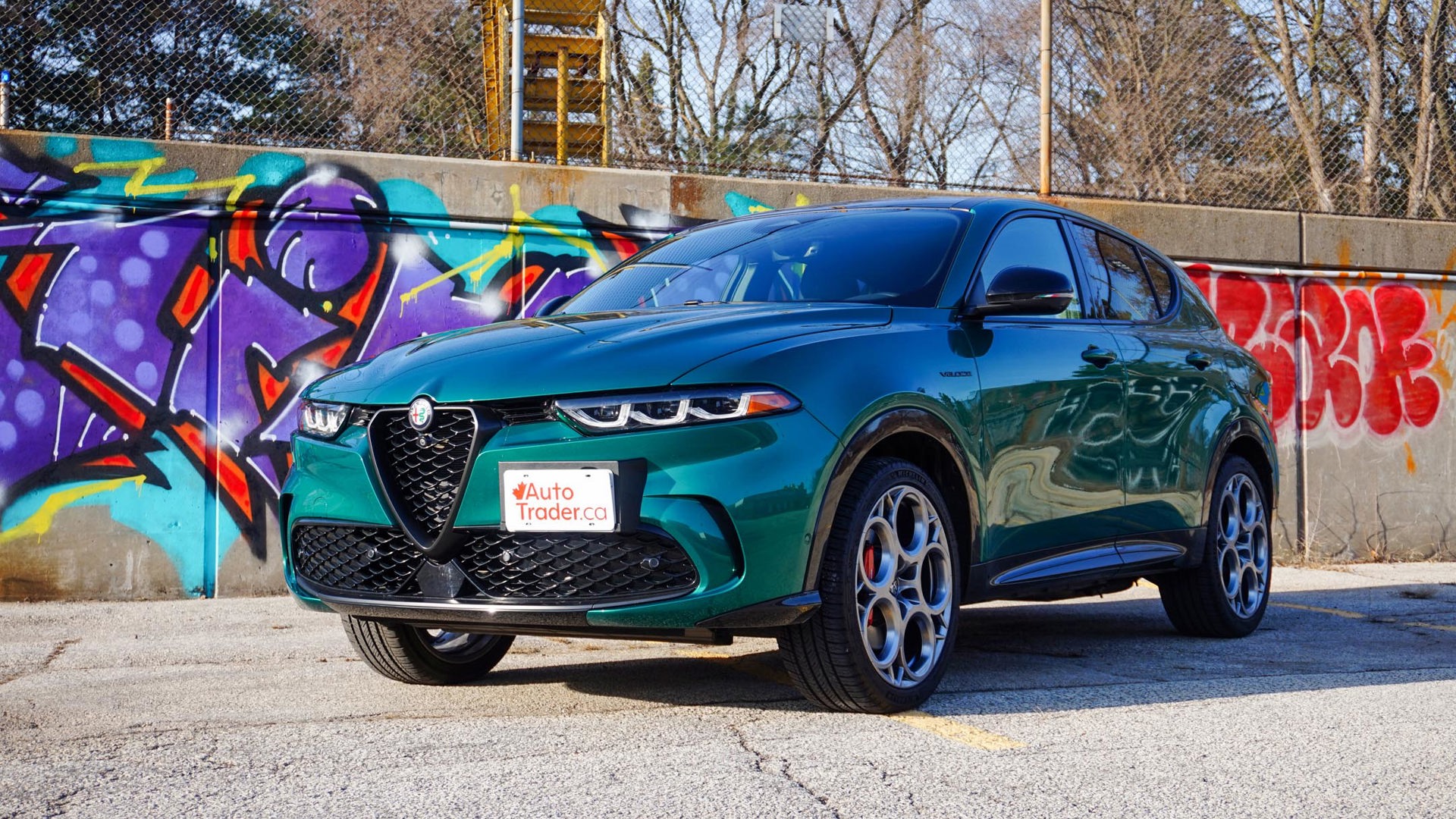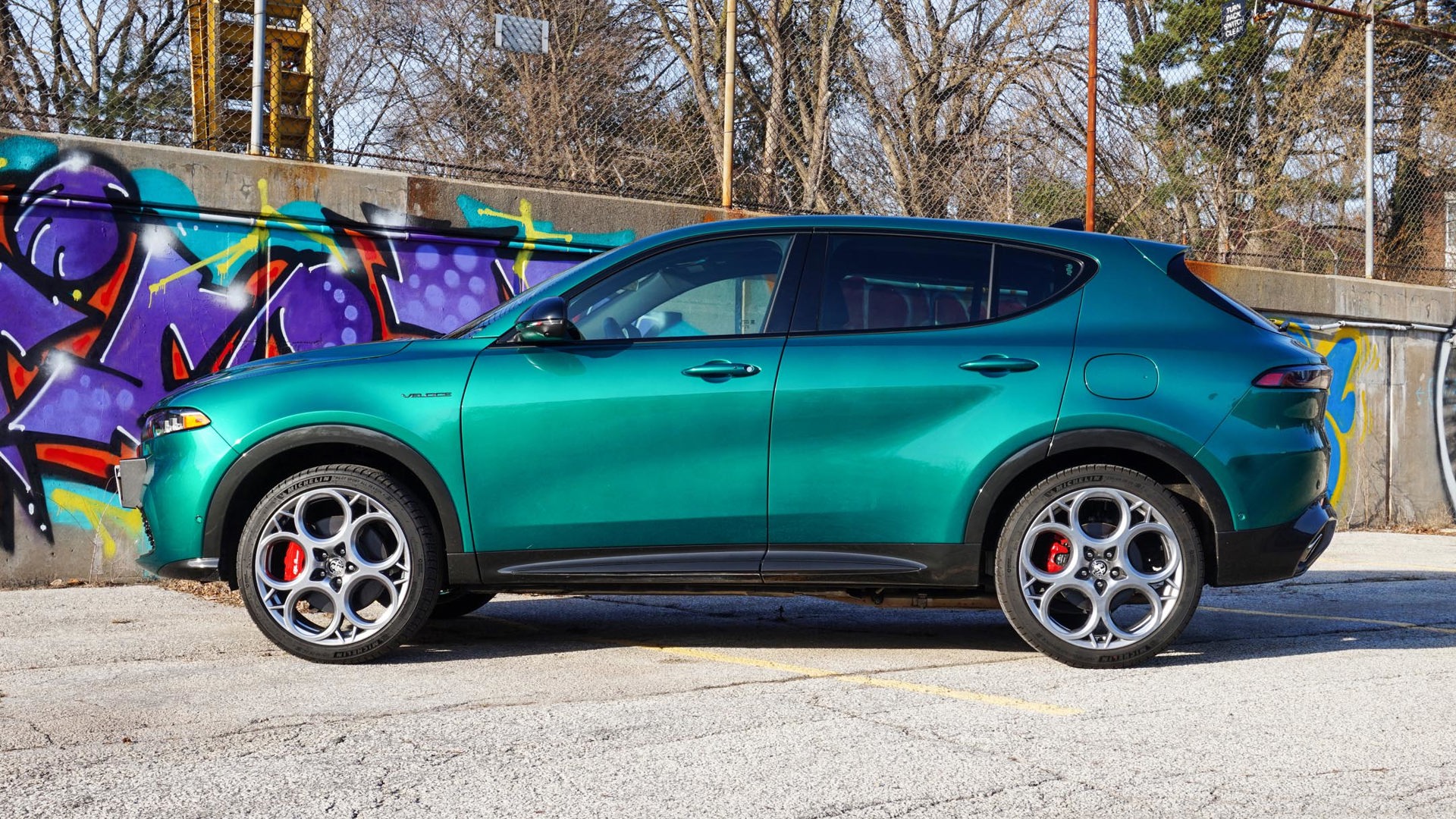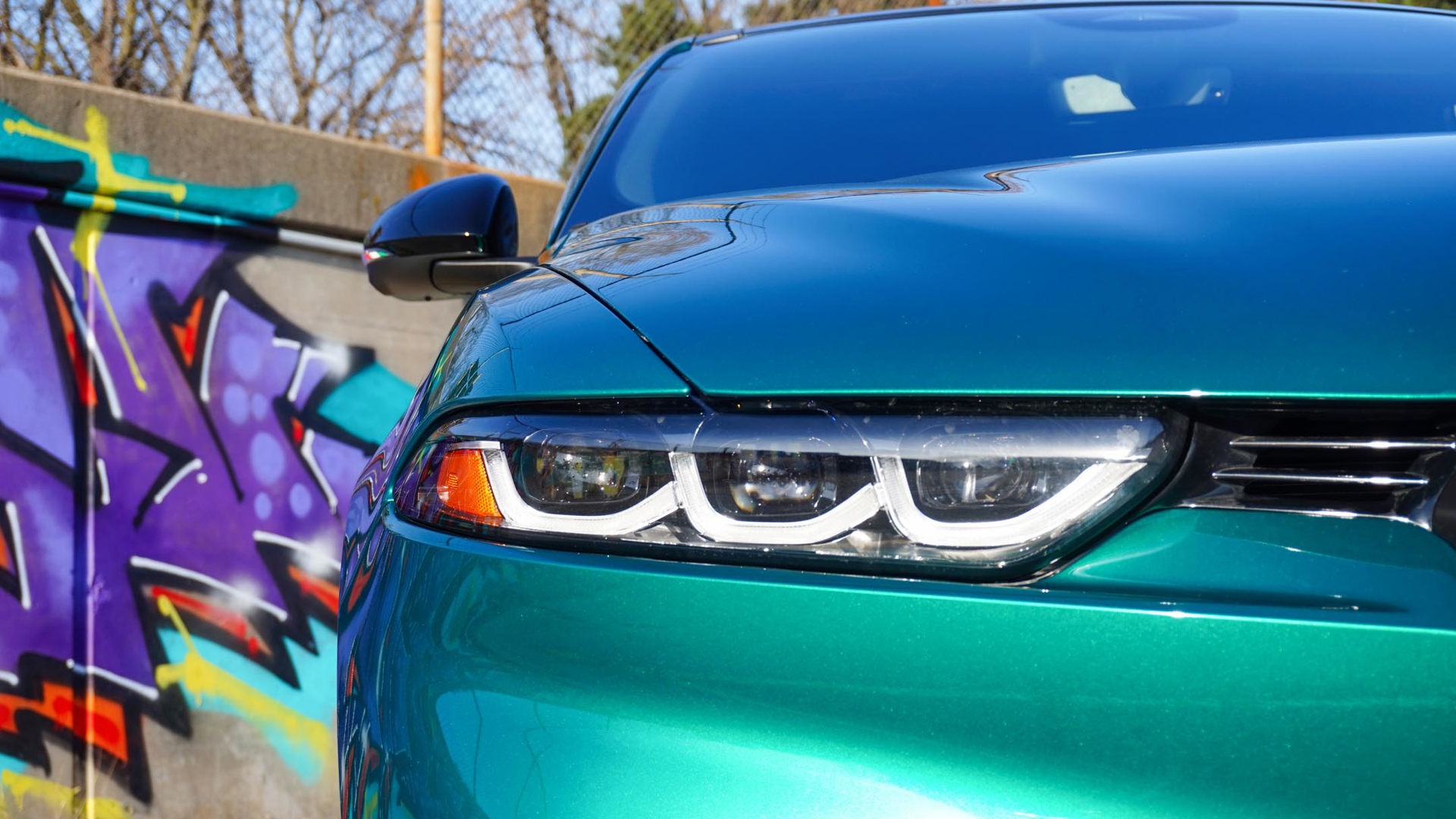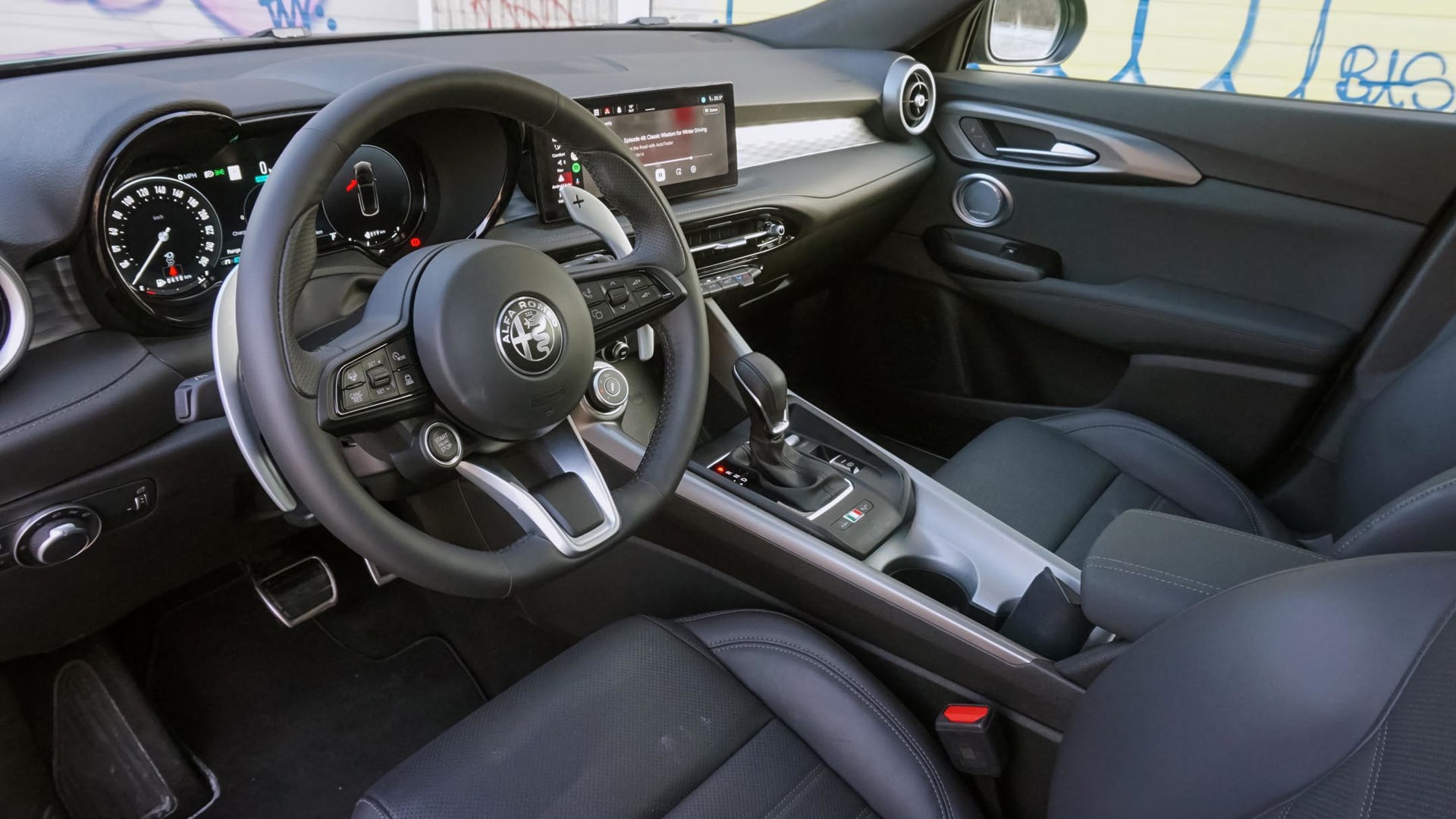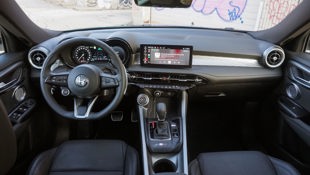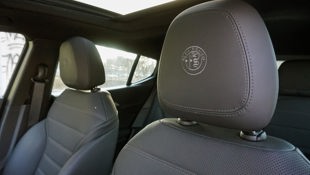Both of my parents are big Alfa Romeo fans.
Their love affair with the Italian brand started in the 1970s when they had a GTV and an Alfetta, and now that they’re retired, they recently bought a 1993 Alfa Romeo Spider Veloce to recapture the carefree fun they had in their 20s. While the 2024 Alfa Romeo Tonale might seem utterly unrelated to the vintage Alfas they fell in love with, this modern model has more in common than you might assume.
Styling: 9/10
Alfa Romeos are beautiful and come chock full of Italian flair and personality that helps them stand out, and the Tonale is no different. The Tonale (pronounced “toe-na-lay”) is a strikingly stylish small crossover with tidy proportions, flowing curves, smartly placed details, and a sporty stance that is all but sure to age well. The Giulia sedan, for example, came out in 2015 and still looks incredible nearly 10 years later – an eternity in car years.
Especially in the metallic emerald green of this tester, the Tonale stands out amongst a sea of generic-looking vehicles and gets plenty of attention for being different. If you’re considering an Alfa Romeo Tonale, I beg you to pick this green paint, because it’s stunning. It’s a $2,000 option that’s worth every penny, but Alfa also offers more affordable – but equally bold – red ($200) or blue ($900) options.
The brand’s signature shield grille and vintage-inspired phone-dial wheels look excellent on the Tonale, and I love how Alfa Romeo works to keep its historic design cues intact. If you park the Tonale next to my parents’ old Alfas, they still look related even though they’re separated by multiple decades and have entirely different body styles.
The lighting signatures front and back elevate the Tonale so it looks more luxurious and sporty than the Dodge Hornet with which it shares a platform. The front licence plate mount looks clunky and out of place, but then it allows the trademark grille to take centre stage.
Power: 8/10
This plug-in hybrid (PHEV) version of the Tonale is powered by a turbocharged 1.3L four-cylinder engine and a 15.5-kWh battery that feeds an electric motor on the rear axle to enable electric all-wheel drive. Total system output is rated at 385 hp and 347 lb-ft of torque, allowing the Tonale PHEV to accelerate from a standstill to 100 km/h in a claimed 6.2 seconds. The SUV’s transmission is a six-speed automatic.
At first, I was worried that a 1.3L engine wouldn’t have enough displacement to give the Tonale the grunt it needs to feel like an Alfa Romeo, but combined with a turbocharger and augmented by the electric motor, the powertrain succeeds in providing a delightful turn of speed that’s enough to be entertaining but not enough to entice you to get into trouble. The only downside is that it doesn’t sound great and lacks the raspy exhaust note I crave from an Alfa.
Driving Feel: 8/10
When I asked my parents why they love their old Alfa Romeos, they simply answered, “They’re fun to drive.” The Tonale PHEV doesn’t feel anything like a sports car and that’s OK, because that’s not its job. Despite this, this SUV still maintains a level of driving engagement that’s hard to find in this segment. It feels nimble, and the highlight of the driving experience is the steering and handling, which are Alfa Romeo cornerstones. The steering feels direct and precise, and the Tonale dives into corners with an energy and stability that belies its crossover body.
There’s a bit of powertrain roughness when flipping between electric and gas power, and the transmission could also be smoother. The relationship between regenerative braking and the mechanical friction brakes could also be smoother, as braking performance is sometimes inconsistent.
Fuel Economy: 9/10
The Tonale PHEV can drive up to 53 km on electricity alone and has three driving modes. The advanced efficiency mode prioritizes electric operation, the dynamic mode prioritizes performance and sharpens responsiveness, and the default mode balances both. There’s also an additional e-save mode that saves the battery reserve for later use and uses the gas engine to help recharge the battery more often.
The Tonale PHEV is officially rated for 8.1 L/100 km combined or 3.1 Le/100 km – for litres equivalent – when driven on electricity alone. When the battery is depleted, the Tonale PHEV operates as a typical hybrid and will still be quite efficient. In this case, it turns off the gas engine when coasting, parking, or waiting at a stoplight, and uses regenerative braking to charge the battery. One more bonus is that the Tonale PHEV doesn’t require premium fuel.
Over 433 km of mixed testing, I averaged an impressive 6.0 L/100 km, with 254 km driven on gas power and 179 km on electric power. The key to unlocking better efficiency is to plug in the Tonale PHEV as much as possible, and the good news is that you don’t need any specialized equipment to get a full charge overnight – the onboard charger can use any standard 120-volt household outlet for an eight-hour charge to 100 per cent, but if you’re out and have some time to charge, a full Level 2 charge takes only two and a half hours.
Plugged in as much as possible and running in the default mode for the earlier half of my test, I easily got the fuel economy into the 4.0 L/100 km territory, but my fuel economy suffered later because I was not able to charge at home.
Practicality: 7/10
The Tonale PHEV has door pockets big enough for water bottles, but the cabin could use a bit more space for small item storage, especially when the cupholders are in use. Cargo capacity is rated at 648 L and 1,430 L with the rear seats folded flat, but the liftover height is a bit high, making it difficult to load large or heavy items. The rear seats fold in a 60/40 split and there’s also a pass-through in the middle, so four occupants can fit inside with room for long cargo like skis. The underfloor storage compartment in the trunk is the perfect size to stash the onboard charger.
User-Friendliness: 8/10
Most Italian cars have some quirks and questionable ergonomics. The most baffling part of the Tonale is the comically huge paddle shifters that get in the way of using the turn signal and wiper stalks. They’re also fixed to the steering column and don’t turn with the steering wheel, so they get in the way often. There is no reason for the paddle shifters to be this large – this is a plug-in hybrid crossover, not some track-special race car.
Luckily, that’s the worst offender, and the rest of the Tonale’s interface is surprisingly user-friendly. Benefiting greatly from parent company Stellantis’s latest Google-based infotainment system, the touchscreen has intuitive menus and is easy to navigate. A row of shortcuts and a home button are always visible on the touchscreen, and hard buttons and toggles for climate control make it easy to make quick adjustments while driving.
Features: 7/10
Standard highlights include wireless Android Auto and Apple CarPlay, an upright wireless phone charger, a heated steering wheel, and heated front seats. I also love the addition of external light indicators showing the state of charge.
The Tonale PHEV lacks some features other competitors have (head-up display and heated rear seats, for example, while ventilated front seats are optional), so it isn’t raising the bar in this sense, but it does come with numerous safety features.
Safety: 8/10
Those standard safety features include automatic high-beam control, lane-keep assist, adaptive cruise control, forward collision warning, front and rear parking sensors, and blind-spot monitoring with rear cross-traffic alert. Surround-view parking cameras, auto-dimming side mirrors, and side parking sensors are part of an upgrade package. Forward visibility is somewhat impeded by thick A-pillars, which create blind spots that can easily hide pedestrians.
Comfort: 7/10
The front seats could be more supportive and comfortable, and rear-seat passengers don’t get a ton of leg- or headroom, which is typical for this class, but it still feels a bit more cramped than competitors like the BMW X1. It rides a bit roughly over broken roads, but the payoff in handling is worth it, and it doesn’t sacrifice comfort to the point where it’s a dealbreaker.
Value: 8/10
The Tonale PHEV is the only entry like it in its segment, so it has no natural competitors. With a starting price of $59,995, the Tonale PHEV is eligible for government incentives, but the catch is that many features that should be standard must be offered as options so its price meets the cap for incentives. Getting features like surround-view monitoring, a sunroof, ventilated seats, side parking sensors, and more adds over $10,000 in options to the Tonale PHEV’s price tag.
The Verdict
The 2024 Alfa Romeo Tonale PHEV is an excellent example of how a brand can evolve in an ever-changing automotive marketplace but stay true to its brand pillars. The Tonale PHEV is a radically different vehicle for Alfa Romeo, yet it embodies many of the factors that make cars from this Italian brand so special. With a stylish, unique look, engaging driving dynamics, and excellent efficiency, the Tonale PHEV is a proud Alfa Romeo.
